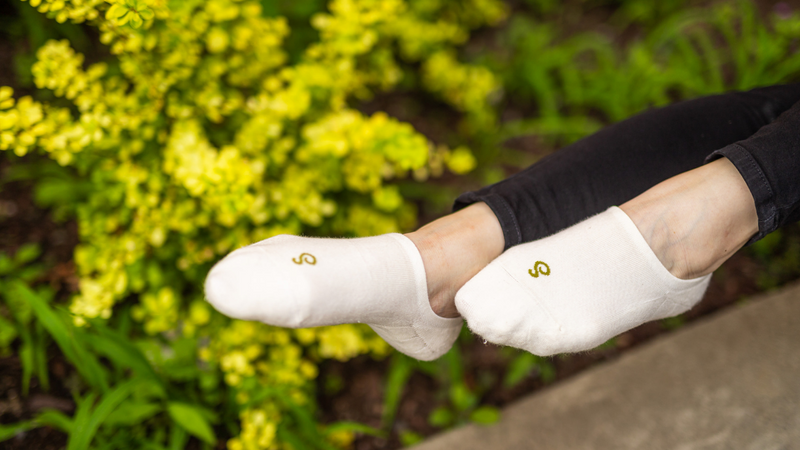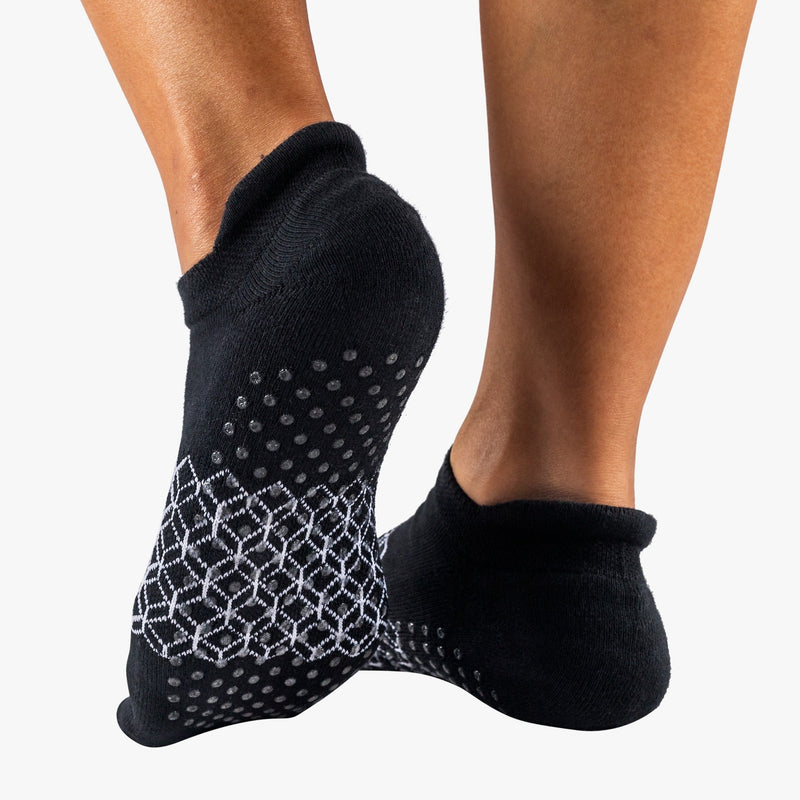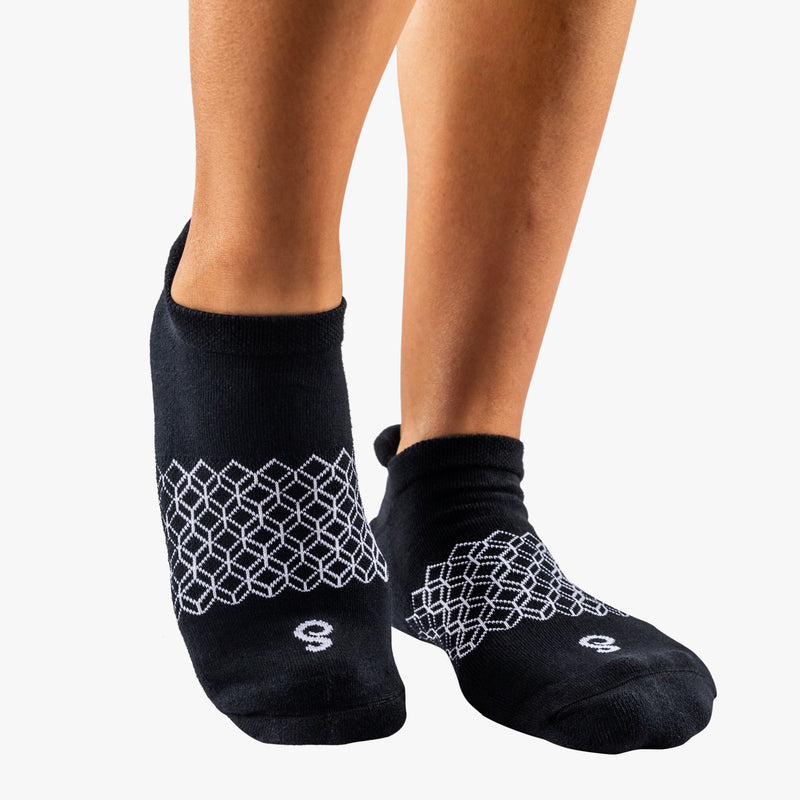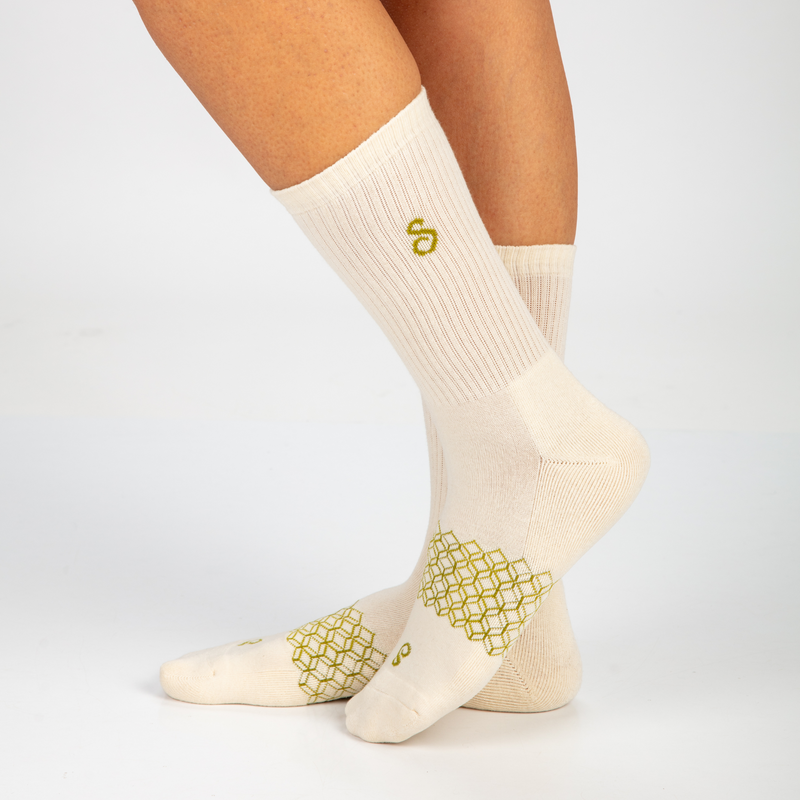
When temperatures rise, even small choices like your socks can make a big difference in how comfortable you feel each day. Wearing the right summer socks keeps your feet cooler, drier, and healthier when the weather is hot. Thin, breathable socks also help stop sweaty feet and unpleasant odours.
Summer socks are designed to let air flow freely, wick away moisture, and keep you comfortable whether you are at work, on a walk, or relaxing outside. Selecting socks made from light and natural materials can help you avoid heavy, sticky feet all season.
Key Takeaways
- The right socks prevent sweaty and uncomfortable feet in hot weather.
- Natural, breathable fabrics like cotton and bamboo work best.
- Choose thin sock styles for better airflow and comfort.
Shopping for Summer Socks?
Hipswan UK offers premium quality no-show socks and ankle socks made with organic cotton and merino wool, ideal for summer.
Why You Need the Right Socks for Summer Heat
Wearing the right socks in summer is important because feet tend to get hotter and sweat more in warm weather. The wrong socks can make feet feel sticky or cause blisters.
Moisture management is key. Cotton socks often hold in moisture, making skin damp. This can lead to an uncomfortable feeling and increase the risk of fungal infections. Choosing breathable materials, such as bamboo, wool, or certain synthetic blends, can keep feet drier.
Feet need to stay cool, so airflow matters. Socks made for summer usually use thin, mesh panels or lighter fabrics to help with ventilation. These features let heat escape and fresh air in.
Common issues from poor sock choice in summer include:
| Issue | Result |
|---|---|
| Excess sweat | Damp, smelly feet |
| Poor ventilation | Hot spots and discomfort |
| Wrong fabric | Skin irritation or blisters |
The right socks can also help prevent odour. Materials that pull sweat away help stop bacteria from growing. This keeps feet fresher for longer.
Proper fit is important too. Loose socks may rub and cause blisters, while tight socks can limit blood flow. It's best to look for socks that fit snugly but are not restrictive.
Taking the time to choose the right pair improves foot health and comfort in hot weather.
What Are Summer Socks?
Summer socks are designed to help keep feet comfortable during warm weather. They use lightweight materials and special features to provide breathability and wick away moisture.
Defining Summer Socks
Summer socks are a type of sock made for hot and humid days. They are typically crafted from thin, breathable fabrics such as cotton blends, bamboo, or specialised synthetic fibres. These fabrics allow air to circulate and help reduce sweat.
Many summer socks have mesh panels, which improve ventilation. Some also have moisture-wicking technology to pull sweat away from the skin. This helps keep feet dry and less likely to develop blisters.
Summer socks often come in low-cut or no-show styles. This means they sit below the ankle and are less noticeable when worn with trainers or casual shoes. Lightweight padding may be added for comfort, but bulk is kept to a minimum.
Common Characteristics
| Feature | Summer Socks |
|---|---|
| Material | Cotton, bamboo, polyester blends |
| Thickness | Thin or ultra-light |
| Breathability | High |
| Style | Low-cut, no-show |
| Moisture Management | Good |
Differences from Regular Socks
Regular socks are usually thicker and made from heavier materials, such as wool or dense cotton. They provide more warmth and cushion, which is helpful in colder months but can be uncomfortable in heat.
Summer socks are designed to be much lighter. The fabrics used allow better airflow and dry faster after washing. Most regular socks do not have mesh panels or advanced moisture control.
Fit and cut also differ. Regular socks may be crew length or longer, while summer socks are often shorter for less coverage and more cooling. Colour choices for summer socks are often light to reflect heat, while regular socks may come in any shade.
These differences help summer socks keep feet cooler and drier, which is important during high temperatures or physical activity.
Key Features of Summer Socks
Summer socks are designed for comfort in warm weather. They focus on keeping feet cool, dry, and comfortable throughout the day. Specific materials and properties set the best socks for hot weather apart.
Breathable Materials
Breathable socks use fabrics that allow air to flow easily around the foot. Cotton blends, bamboo, and specialised synthetics are popular choices. These materials help release heat and stop the feet from feeling trapped or sweaty.
Some socks include mesh panels or perforations. These features increase ventilation. A list of common breathable materials includes:
- Cotton blends: Soft, natural, and airy
- Bamboo: Lightweight, antibacterial, and gentle on skin
- Polyester or nylon: Wicks moisture and dries quickly
In hot weather, tight or thick fabrics can cause overheating. Lightweight, open-weave options are more effective. By allowing better air movement, the best socks for hot weather reduce the chance of blisters and odour.
Moisture Management
Moisture control is essential in summer socks. Feet tend to sweat more in the heat, which can cause discomfort or even fungal problems. Socks with moisture-wicking fibres move sweat away from the skin, helping feet stay dry.
Technical yarns like Coolmax® or natural ones like merino wool are known for their moisture management. These fibres trap sweat and release it to the outside of the fabric, where it can evaporate.
Features that improve moisture control include:
- Reinforced heels and toes to absorb excess sweat
- Arch support bands for better fit and less slipping
- Anti-microbial treatments to prevent odour
Moisture-wicking socks keep feet fresher and help prevent issues linked to damp skin, making them a key choice for hot days.
Best Summer Breathable Sock Materials: Cotton, Bamboo, Merino Wool Explained
Choosing the right sock material can make a big difference in keeping feet cool, dry, and comfortable in summer. Not all fabrics are equal—some breathe better, wick moisture, or feel softer against the skin.
Cotton and Cotton Blends
Cotton is a popular material for summer socks because it is soft and widely available. Pure cotton is lightweight and comfortable for daily wear. However, 100% cotton absorbs sweat instead of wicking it away, which can lead to dampness.
To improve performance, many breathable socks use cotton blends. Cotton yarns are often mixed with polyester, nylon, and elastane. These blends keep the socks light, add durability, and help them dry faster.
A quick comparison:
| Feature | 100% Cotton | Cotton Blend |
|---|---|---|
| Breathability | Moderate | High |
| Sweat-wicking | Low | Moderate |
| Drying speed | Slow | Fast |
| Comfort | High | High |
Most cotton and cotton blend socks are easy to wash and affordable, making them a practical summer choice.
Bamboo and Eco-Friendly Options
Bamboo is a newer sock material that is soft, smooth, and feels cool on the skin. Bamboo fibres are naturally breathable and offer good moisture management. Many describe bamboo socks as being silkier and cooler than cotton.
Bamboo is also considered eco-friendly. It grows quickly and requires fewer pesticides. Some manufacturers blend bamboo with cotton or synthetic fibres for extra stretch and durability.
Key points about bamboo socks:
- Soft texture: Reduces friction and irritation
- Odour-resistant: Fights the build-up of bacteria and smells
- Sustainable choice: Lower environmental impact than traditional cotton
Eco-friendly options may also include recycled polyester or Tencel. These materials aim to combine comfort with a lower carbon footprint while still being breathable enough for summer.
Merino Wool and Merino Blends
Merino wool is not just for winter. High-quality merino wool is fine, soft, and naturally moisture-wicking. It can keep feet cool in hot weather by pulling sweat away from the skin and allowing it to evaporate.

Merino socks also resist odours. They are a good choice for those who want breathable socks that stay fresh after hours of wear. Many summer socks use thin merino wool or blend it with nylon or elastane for extra structure.
Benefits of merino wool socks:
- Temperature regulation: Keeps feet cool or warm as needed
- Softness: Non-itchy and gentle on skin
- Odour control: Natural antibacterial properties
Merino wool dries faster than regular wool and maintains its shape well. For those wanting high performance in breathable socks, merino options are highly reliable even on the hottest days.
Worst Sock Fabrics for Summer: Why Polyester and Synthetics Fail
Polyester and other synthetic fabrics are common in socks. These materials are not ideal for warm weather. They can make feet feel hot and uncomfortable.
Key issues with polyester and synthetics:
- Poor breathability
- Traps moisture
- Can cause odour
When feet sweat, polyester struggles to wick moisture away. This makes socks feel damp and sticky. Over time, this can lead to the growth of bacteria and unpleasant smells.
Here is a comparison of natural and synthetic sock fabrics:
| Fabric | Breathability | Moisture Wicking | Comfort in Heat |
|---|---|---|---|
| Cotton | Good | Moderate | Good |
| Wool | Excellent | Excellent | Excellent |
| Polyester | Poor | Poor | Poor |
| Nylon | Poor | Moderate | Moderate |
Synthetic fibres, such as polyester and nylon, are less absorbent than natural fibres. They often trap heat and sweat. Feet can feel warmer, especially during long, hot days.
Choosing socks with a high synthetic content may seem practical because they dry quickly after washing. However, for daily comfort in summer, natural fibres are usually a better choice.
Sock Styles for Summer Comfort: No-Show, Ankle, Crew
Different sock styles can help keep feet cool, dry, and comfortable during warm weather. Certain fits also reduce the chance of blisters, keep odours down, and work better with specific types of summer shoes.
No-Show Socks
No-show socks sit below the edge of most trainers, loafers, and low-cut shoes. They are designed to be invisible when worn, offering a "bare ankle" look.
Most no-show socks use lightweight, thin fabrics such as cotton or bamboo. These materials help feet breathe and wick away sweat. Many pairs also include silicone grips on the heel, which stop the sock from slipping down during the day.
People often choose no-show socks for style reasons, as well as comfort. They work well with trainers, loafers, and summer slip-ons where visible socks would look out of place. The key is proper fit—too large, and they bunch up; too small, and they slide off. For best results, look for options labelled as "grip" or "stay-put" for extra security.
Main benefits:
- Invisible under most shoes
- Good for hot days
- Helps prevent blisters and odour
Ankle Socks
Ankle socks cover the entire foot and end right at or just above the ankle bone. They are one of the most popular choices for summer, especially for sports or casual wear.
Many ankle socks are cushioned at the bottom and use mesh panels to allow extra airflow. Some styles are reinforced at the heels and toes for durability. Because of their length, ankle socks protect against rubbing when wearing trainers or hiking shoes, but still keep feet cooler than longer socks.
These socks come in a wide range of colours and patterns, which makes them easy to match to outfits. For extra comfort, look for seamless toes or arch supports. They offer more coverage than no-shows, which some people find more secure during activity.
Best for:
- Sports and walking
- Everyday trainers
- People who want more protection than no-show socks
Crew Socks
Crew socks reach about halfway up the calf. In summer, lighter versions made from moisture-wicking materials are preferred to help manage sweat and heat.
Some crew socks feature ribbed or stretchy cuffs to hold them in place. They also come in various thicknesses—from nearly sheer to lightly cushioned. The extra height helps protect ankles and lower legs from bites, scrapes, and the sun, which can be helpful during outdoor activities like hiking.
Styles range from plain white to colourful patterns. Crew socks are often chosen for their versatility, as they pair well with trainers, boots, and some casual shoes.
Ideal uses:
- Outdoor activities such as hiking or cycling
- Situations requiring extra leg coverage
- People prone to blisters or irritation above the shoe line
Choosing the Best Socks for Hot Weather
Lightweight, breathable socks keep feet cool during summer. Materials and design play a big role in preventing discomfort.
Fit and Comfort
A good fit prevents rubbing and sliding during the day. Socks that are too tight can trap heat and cause sweating, while loose socks may bunch up and cause trouble. Look for socks with a smooth toe seam to avoid irritation.
Materials matter. Thin cotton-blend socks or those made from bamboo and merino wool let air flow and wick away moisture. Avoid thick wool or fully synthetic blends as they trap heat.
Compression socks might not be the best choice in hot weather unless needed for medical reasons, as they can increase sweating. Instead, pick low-cut or ankle styles for more airflow.
Helpful checklist for best socks fit:
- Flat seams
- Not too tight or loose
- Breathable fabrics
- No bulky padding
Odour and Blister Prevention
Sweat and heat can cause both odour and blisters if socks are not chosen carefully. Natural fibres like bamboo and merino wool help wick moisture and fight odour, making them better than pure polyester or nylon for summer.
Blister prevention depends on keeping feet dry. Look for socks with mesh panels or vented areas to boost breathability. Stay away from socks with poor moisture control as these can lead to soggy, blister-prone feet.
Antibacterial treatments in some socks can reduce bacteria growth and smells. Changing socks daily and washing them well also plays a big role in odour prevention.
Best socks for hot weather are designed to stay dry and fresh even with daily wear.
Antibacterial and Moisture-Wicking Socks: Keep Your Feet Cool and Dry
Antibacterial socks use special fibres or treatments to help prevent the growth of odour-causing bacteria. This is useful during summer when feet tend to sweat more.
Moisture-wicking socks draw sweat away from the skin. This keeps feet dry and helps to avoid discomfort or blisters. Many summer socks use materials like bamboo, merino wool, or synthetic blends.
Benefits of Antibacterial and Moisture-Wicking Fabrics:
- Reduced smells
- Less dampness
- Lower risk of fungal infections
Popular Materials
| Material | Properties |
|---|---|
| Bamboo | Soft, breathable, antibacterial |
| Merino Wool | Moisture-wicking, odour control |
| Polyester/Nylon | Quick-drying, long-lasting |
Choosing socks with these features is helpful for people who are active or spend long hours outdoors. They also suit those who want to keep their feet comfortable in the heat.
Look for labels such as “antimicrobial,” “moisture-wicking,” or “breathable” when shopping for summer socks. These features can make a big difference during the warm months.
Where can one buy quality summer socks?
It just so happens that hipSwan UK has a range of excellent summer socks, with over 1,000 5-star reviews, which you can buy right here online.

















